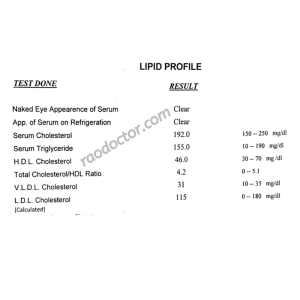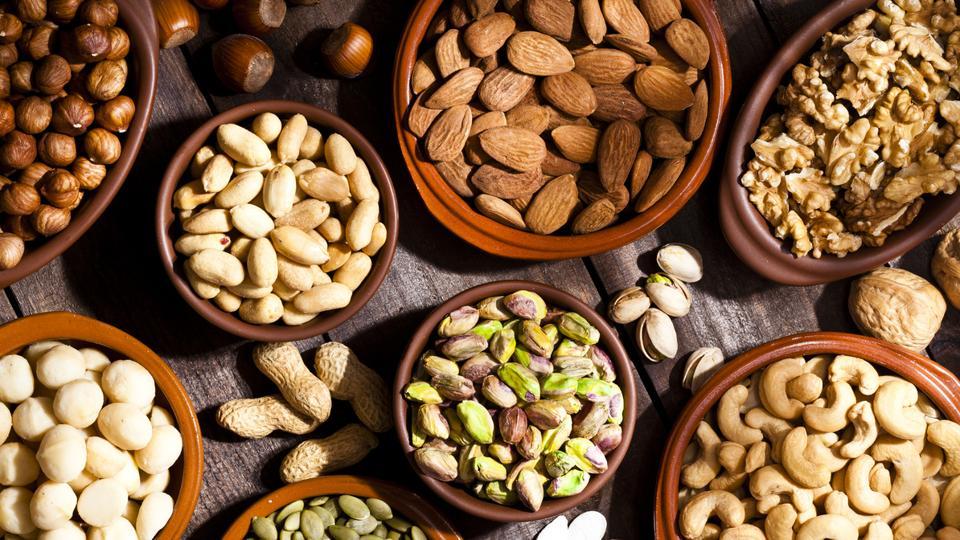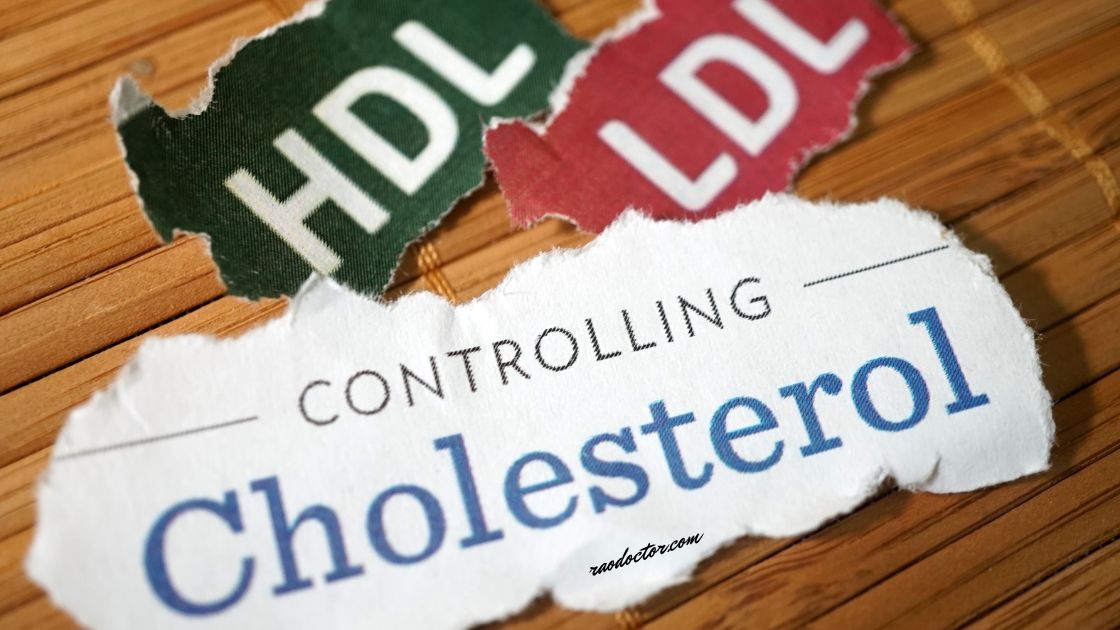Introduction
Having discussed the ‘Good’ ,’Bad’, and ‘Ugly’ cholesterol in my last article, today we will learn the ways for cholesterol level management for a hale and hearty life.
An increase in cholesterol levels, especially the ‘bad’ and ‘ugly’ ones, above normal level induces deposition of fats in the arteries of our circulatory system by a process termed atherogenesis. This, in turn, leads to a rise in blood pressure and the formation of blocks in the coronary[heart] arteries.
Investigations to know your Cholesterol levels
In laboratory blood tests these are called the Lipid Profile, we lookout for all of the above-mentioned cholesterol levels. Broadly speaking, I would look out for these results:-
Different Components of Lipid Profile-
- Total Cholesterol
- Triglycerides
- HDL cholesterol
- LDL Cholesterol
- VLDL Cholesterol
- HDL/ Total Cholesterol ratio
- HDL/LDL ratio
Here is a sample of how a typical lipid profile report looks like-

Now let us go ahead and learn how to manage all the components of lipid profile, with and without medicines, one-by-one.
Management of Cholesterol Levels
Management of cholesterol levels depends upon how high these levels of different lipids are. Whenever I prescribe the lipid profile test, I look out for the two ratios I have mentioned above. The lower the ratios, the better the management. Let’s learn how to do it-
A] How to increase HDL:-
Normally, HDL level ranges from 40 to 65 mg/dl in a person with optimal total cholesterol level and higher the HDL level, the better the chances for protection from premature heart attacks. However, with an increase in other non-HDL cholesterols, there is a substantial decrease in HDL.
Consider these options for increasing HDL:-
- Have a diet rich in carbohydrates with high levels of fiber in it{oats, quinoa, etc.,} and low in fats.
- Diet rich in mono-saturated fats such as lean meat, avocado, olive oil, canola oil, rice bran oil, etc. increase HDL.
- Niacin- a B-complex vitamin, also known as vitamin B3-is known to increase HDL. Foods rich in niacin or vitamin B3 are chicken liver and breast, tuna fish, salmon, mushrooms, peanuts, green peas, brown rice, etc.
- Daily exercise for weight loss—HDL levels increase by 1-2 mg/dl for every 3.5 to 5.00 kg weight loss. A crash diet causes weight loss through loss of water from the body and is not a true weight loss and therefore does not increase HDL.
- Here, walking briskly for 30 to 45 minutes daily followed by a high-intensity exercise for 5 to 10 minutes, comes handy as it tends to burn fats in the form of calories thereby reducing weight as well as total cholesterol. Of course, a prudent diet is also a must along with walking and exercise.
B] How to decrease LDL and VLDL:-
Raised LDL cholesterol levels [LDL above 120 mg/dl ] and VLDL levels[above 20 mg/dl] can be brought under control by the following these simple steps:-
- Bodyweight reduction by 5 kg is known to bring down LDL cholesterol by 5%. Brisk walking, jogging, cycling, etc. helps in reducing weight in 4 to 5 months.
- Having about 25 to 50 g of nuts like almonds, walnuts, hazelnuts, etc. daily can reduce LDL by 8-12 %.
- soy proteins [tofu, soy chunks] on a regular basis, first-class proteins like egg whites only [yolk{yellow part} in 1 egg contains 280 mg cholesterol] can reduce LDL by 5%.
- Sat-isabgol [psyllium husk]-a soluble fiber, about 5 to 10 g per day can reduce LDL by 5%.
- Avoid butter and ghee [clarified butter]-instead have Nutralite butter spread, Amul Lite bread spread about 1 to 3 g/day—this can reduce LDL by 5%.

If you follow all the above instructions, your total LDL reduction will be about 25 to 30%.
Having said this, your risk of having a heart attack reduces by 10% on reducing LDL and VLDL by 10% and 90 % on reducing LDL by 30%.
C] How to maintain Triglycerides levels
Now we come to the topic of Triglycerides-TGL-the ugly cholesterol. Triglycerides are fats consisting of 3 molecules of fatty acids [we will come to this in my next article] combined with 1 molecule of alcohol glycerol. Calories that are consumed during meals but not needed by the body for immediate use, are stored in the form of triglycerides and are stored in fat cells and released when the body needs it in between meals.
A high level of TGL, also called hypertriglyceridemia, can lead to inflammation of the pancreas, referred to as pancreatitis, which in the future can lead to diabetes. So, it is essential that this ‘ugly’ cholesterol be controlled effectively to avoid complications.
Normal TGL level range is 100 to 150 mg/dl where 100 mg/dl is more desirable than 150 mg/dl. So, how do we control it? Consider these points: –
- TGL rises by having foods with a high glycemic index such as refined flour, white bread, alcohol, pastries, soft drinks, etc.—avoid these foods especially in your dinner. People tend to avoid regular breakfast and lunch in the hope that it will bring down weight and have a heavy meal at night—this should be reversed. Having a heavy breakfast, a moderate lunch and a light dinner are highly recommended.
- TGL is high in overweight and obese people. A weight reduction of 5% can bring down your TGL level by 50%. Even without weight loss, TGL will reduce substantially by regular exercise and that includes brisk walking for 40 to 45 minutes, high-intensity training for 5 to 10 minutes, jogging.
- Healthy walk in the park to improve your cholesterol levels[/caption] weight training in a gym, swimming, cycling for 30 to 40 minutes daily.
- Food rich in Omega-3 polyunsaturated fats {like fish oil} and alpha-linolenic acid {like oils of flaxseed, canola, mustard, soybean; nuts like almonds, walnuts, peanuts; tofu- a soy product} also helps in reducing TGL.
If at any time you would like to know how much cholesterol or fats are present in any food items you like to eat, click the link to this article- Cholesterol Content Of Foods. You can then enjoy your favorite food item adjusted to calculated or required amount of cholesterol in it.
Medicines that your Doctor may prescribe-
There are many medicines available to bring down raised levels of cholesterol. However, I suggest that you should consult your family physician before starting them so that you get the perfect dosage.
- Statins like atorvastatin [e.g., Atocor, Atorvas] rosuvastatin [e.g., Rosufit, Rosuvas].
- Fibrates such as fenofibrate [e.g., Fenolip].
- Niacin [e.g., Nialip].
- Fish oil capsules [e.g., Seven Seas Capsules].
Physicians use these medications all over the world in patients who are at risk of heart diseases like hypertension, angina, diabetes, recent heart attack and obesity.
You should know one thing – some of these cholesterol-lowering drugs like statins have serious side-effects in some cases. Read all about precautions to take while on statins.
If your doctor has prescribed these medicines, you can have them delivered at your doorstep by using the links given below-
Netmeds 1
Conclusion
I have tried my best to explain the treatment of cholesterol as easy as possible. If you have understood the concept of Cholesterol Level Management well, do share this article with your family and friends.


